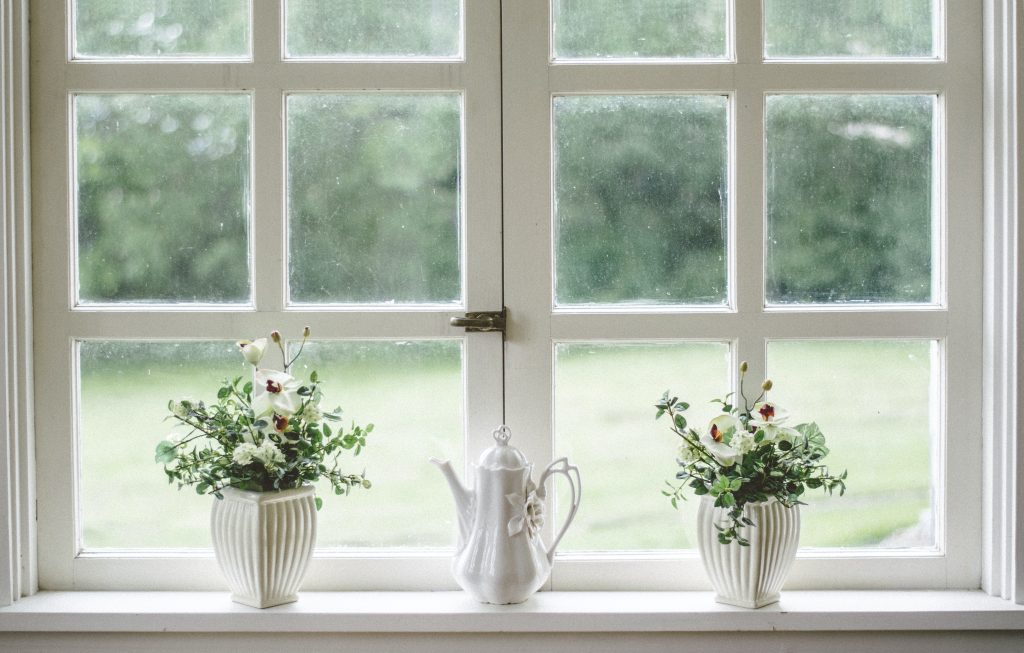The time has come. Summer is ending and you should be getting ready to bring those outdoor plants inside. You can do this with either your potted or in-ground plants; either way, if you want them to live through the cold season, you will need to bring them inside the warmth of your home. Regardless of where they stayed outside through the summer, transplanting takes extra precautions if you want them to stay alive and thrive for next spring.
Follow this guide to ensure a calm transition for your plants!
Preparation
Simply moving your potted plants inside and hoping for the best is usually a recipe for disaster. Make sure when it’s time to bring those plants inside, they have adequate space in a room with good sunlight and air circulation.
Have a space ready: Before you bring anything inside, clear some room in your home where you want to place your plants. Set up tables or stands where sunlight can easily reach. You can improve sunlight exposure by cleaning the windows near your new location.

Choosing the space: Plants that require full sun will prefer a southern-facing window. Plants that only need partial sun will prefer either a west or east-facing window. Northern-facing windows do not provide enough sunlight to be considered a good location for indoor houseplants. Keep these principles in mind when deciding where you want to display your new decorations.
Additional lighting: If you don’t have good natural light in your home, you can purchase full spectrum lights, available at any hardware store, to place near your houseplants. If you are serious about continuing your plants growth and maturation, consider taking another step further and getting a grow light. Grow lights provide the perfect amount of light to keep your plants growing in the winter months.

Acclimation
Since outdoor plants are getting much more sunlight than they do indoors, there is a natural acclimation process that occurs where a plant must adapt to the new conditions.
Take your time: The best thing you can do to ensure a smooth transition is to gradually move your plants in areas of increasing shade. Over the course of a 10–14-day period, you can effectively slow down this acclimation process and prevent transplant shock.
You may still notice fallen leaves or discoloration but that is to be expected on most plants that are moved. Once they are fully adjusted, they will be okay.
Deadheading and trimming: Make use of this time moving your plants inside to cut and trim those dead or discolored leaves. This will help your plant adjust to life on the inside by speeding up the acclimation process. This step also helps to control their size, which can be especially helpful when dealing with larger houseplants like Monsteras or Strelitzias.
Re-potting: This is also a good time to see if your plants are root bound. If so, get a larger container to keep your plant’s growth steady. For in-ground plants, replace the soil with potting soil to give the plant the best chances of surviving the transplant.
De-Bugging
Check to make sure there are no bugs on your plants before you bring your outdoor plants anywhere near your home. Pests like mealybugs and spider mites can quickly spread causing destruction to your other houseplants. Follow these steps to ensure the health of your plants.
Check your plants: Look closely at all parts of your plants for pests — this includes: the leaves, stem, all sides of the foliage, and new growth. You might even consider using a magnifying glass to really ensure that no pests are present. Pests love the underside of leaves, tight crevices, and cooler, darker areas to hide out so make sure to check every corner of the plant. Also, take the time to check the soil as some pests like to burrow down and pick at the roots as well.
Insecticidal sprays: There are many options out there that will get the job done for you; yet most are filled with chemicals that can hurt other, more helpful insects like bees and ladybugs. Once these plants are brought inside, your family and pets will also be exposed to these toxic chemicals.
Consider natural insecticides like neem oil and all-natural castille soap. Make up a batch (1 tsp of oil or soap per liter of water) and fill a spray bottle. Lightly coat your houseplants and let the mixture go to work. Other effective, but slightly more harmful, homemade insecticides that you can use are dish soap and water. Once you have sprayed all parts of your plant, make sure to let it air out completely as you don’t want the liquid to sit and cause mildew to form.

Awareness
During this time, you will need to remain aware of your plant’s new environment and routine. Your plant is going to be receiving a lot less sunlight, less water (unless you live in a region with less precipitation), and less air circulation. To keep it alive and growing until next spring, follow the steps mentioned above for a successful winter season.
Want to keep reading about indoor house plants? Check out our blog on National Indoor Plant Week.
Sources
“How To Bring Your Outdoor Plants Inside For The Season” WallyGrow.com. 13 September 2019. https://wallygrow.com/blogs/feature/bringing-plants-inside. Accessed 7 October 2021.
“7 Proven Techniques For Debugging Your Houseplants” Salisburygreenhouse.com. https://salisburygreenhouse.com/7-proven-techniques-for-debugging-your-houseplants/. Accessed 7 October 2021.
Rhoades, Heather. “How To Acclimate Plants Indoors For Winter” GardeningKnowHow.com. 31 August 2021. https://www.gardeningknowhow.com/houseplants/hpgen/acclimate-plants-indoors-winter.htm. Accessed 7 October 2021.




